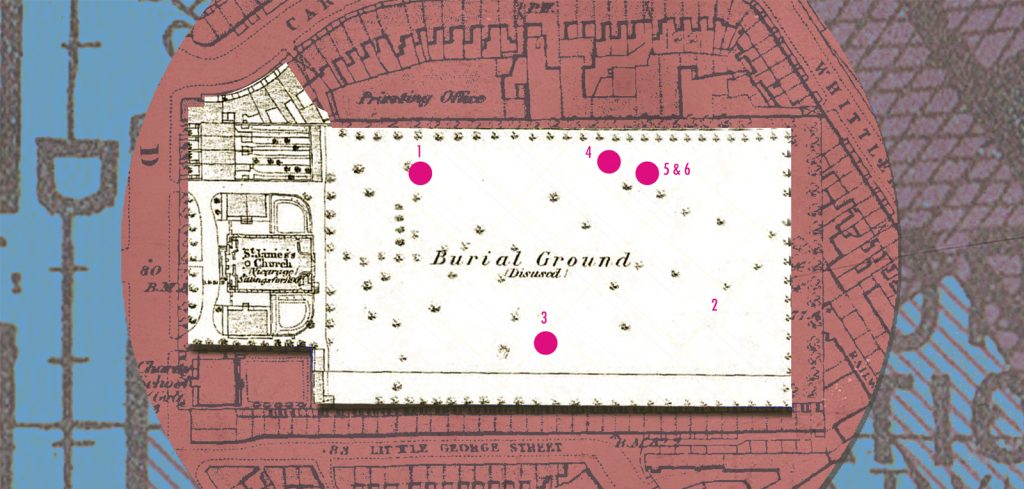People from all walks of life were buried at St James’s Burial Ground, rich and poor, young and old. The cemetery was used from 1790 to 1843, during a time when London was expanding quickly. It struggled to deal with London’s increasing population and closed to new burials earlier than expected.
Euston station was built right next to the cemetery, and the site now forms part of the HS2 scheme. In 2017, archaeologists from MOLA Headland Infrastructure, working on behalf of Constain Skanska Joint Venture, carefully excavated over 31,000 burials. This provided an opportunity to explore and better understand the stories of thousands of mostly ordinary Londoners.
Opportunity to identify past Londoners
Incredibly, archaeologists discovered thousands of ‘coffin plates’. These are metal squares with the name of the person buried, which were attached to the coffin. This means we can give names to the remains archaeologists find.
Just as unusual, the 60,000 written burial records for this cemetery have also survived. Burial records often include details like the cause of death or home address. Matching the burial records to the coffin plates therefore gives us a glimpse into the lives and deaths of Londoners.
Telling six forgotten stories
We wanted to uncover some of these people’s lives in more detail. To reveal more information, MOLA Headland teamed up with members of the Dragon Hall Trust community in Camden.
Together, we researched six people buried at St James’s Burial Ground. These six people represent the huge range of experiences Londoners had – from the wealthy wife of a reverend to a formerly enslaved pub landlord.
By digging through historical records, volunteers have discovered tiny details about these people. Yrene was ‘missed by her friends’. Michael had a huge family and kept an eating house. Margaret was probably a house servant.
These people were mostly forgotten, but modern-day Camden locals have brought their stories to light. These accounts have now been visually represented on a life story map illustrated by Priya Sundram.
The circular design for the illustrated life story map is inspired by an 18th century circular map held at the London Metropolitan Archives collection. Priya also incorporated a range of historical and more contemporary maps of the Euston area to symbolise the multiple layers of this area’s rich history.
Learn more about each of these stories by downloading our life story map.
Get involved!
You can help us discover more stories by typing up, or transcribing, the handwritten St James’s Burial Ground records online. It doesn’t take any special skills and you can spend however long you’d like to help out.
From the comfort of your sofa you can help us learn more about how people lived and died 200 years ago.
For more information, and tips on how to transcribe, visit the Zooniverse website.
You can also learn about our latest discoveries by subscribing to our newsletter. You’ll get regular updates on what we’ve found in the burial records and get a sneak peak at some of the finds from St James’s.

0 Comments
Leave A Comment